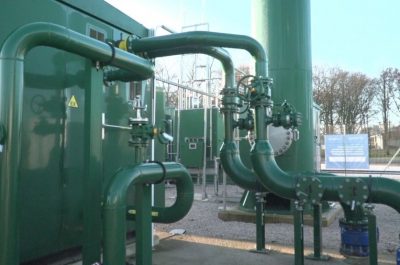Vegetation management variability and the case for ISO 55000
Vegetation management is one of the most critical activities influencing the safety, reliability, efficiency and sustainability of Australia’s electricity network services. The routine management of vegetation growing along powerline easements is a significant recurring maintenance task for electricity network providers. The task varies greatly among network providers and is influenced by a multitude of factors.
GHD has recently undertaken a review of the key factors that influence vegetation management program design for the electricity network industry. GHD’s findings, detailed in the Vegetation Management Variability Report, identify the significant variability in the operating environments in which network vegetation management programs are carried out. Key factors driving variability are differences in:
- asset characteristics between network providers;
- landscape setting features;
- climate and natural hazard event settings;
- vegetation distribution and growth dynamics;
- standards applying to vegetation management; and
- community values and expectations.
Differences in asset characteristics
The nature of network assets has a significant impact. For instance, the risks inherent in transmission network voltages and the higher consequences of transmission line outages, see clearance regimes for transmission network providers that are typically in the form of maintenance corridors, as they require less selective treatment to keep them clear of vegetation. The focus for distribution network operators is on the selective, recurrent trimming of retained vegetation; hence distribution networks are generally more heavily vegetated and have a greater clearance burden.
Differences in landscape setting features
For the purposes of this investigation, landscape settings were grouped into five categories – urban, rural-agricultural, rural-urban interface/intermix areas, forested hill/mountain areas, and remote low rainfall areas.
Urban areas typically have high densities of network assets and bushfire risk may be low, however public safety risks and community expectations relating to aesthetic values can be higher and add complexity to vegetation management activities.
In rural-agricultural areas, some landholders are concerned about biosecurity and are enforcing entry conditions for vegetation management work, while mountain landscapes are sometimes subject to higher levels of environmental protection and control, placing restrictions on how vegetation management programs are conducted.
In settings where populated areas are interspersed with forested areas, bushfire risk can be high and heavily vegetated spans common, generating substantial vegetation management burdens, particularly where growing conditions are favourable.
Differences in climate and natural hazard event settings
Environmental conditions, specifically rainfall, influence vegetation growth rates and the frequency and volume of vegetation management required. Rainfall can be highly varied between network service provider areas in terms of total rainfall and fluctuations over time. Within any given year, one network area may experience flooding, while another may enter a period of unprecedented drought. Figure 1 (below) shows the rainfall variability experienced during the financial year 2014/15.

Figure 1: Rainfall deciles for FY2014/15.[i]
Further, different natural hazard event types (cyclones, storms and bushfires), which are key influences in vegetation management programs, vary significantly between climate zones with each having a unique mix of event types, occurrence frequencies and severity potential.
Severe tropical cyclones have crossed the Australian coast within a latitude belt from around 10 to 25 degrees south. While major bushfire events are a periodic feature in all Australian States and Territories, event occurrence and severity differs significantly between and within jurisdictions.
Differences in vegetation distribution and growth dynamics
In response to the variety of climatic situations, soils and water sources, a diverse range of vegetation has evolved across Australia with widely varying growth dynamics. Even tree species that have a wide distribution have significant variation in morphology due to adaptations to survive the significant differences in climatic conditions across their range. Many are adapted to take advantage of infrequently occurring favourable conditions to regenerate, giving rise to pulse-regeneration events.
Vegetation growth rates are not reliably consistent from one year to the next. This unpredictable inter-annual variability in growth causes significant perturbations in network provider vegetation management programs. Last year’s program scope is not a reliable indicator of next year’s program.
Differences in standards applying to vegetation management
Different regulatory frameworks and standards have been developed and evolved over many decades across Australian State and Territories. Some network service providers are able to set their own standards and practices to achieve set regulatory requirements, while others are subject to more prescriptive standards. The report tables the wide variety of requirements across jurisdictions as seen below.

The report has identified that, with vegetation clearance specifications (the distance required to be maintained between powerlines and vegetation), the ‘standard variance from least to most clearance exceeds 100%’[ii].
Differences in community values and expectations
Vegetation plays an important role in the community and the environment providing visual appeal, shade, and wildlife habitat. It forms part of the identity of some townships. In the urban environment, there is a general view that trees are not just a risk, but an asset reflecting community’s environmental, cultural, historical and streetscape value.
The wide open maintenance corridors in which transmission lines are situated are obvious interventions on the landscape and are often of direct interest to stakeholders. Expectations of minimal impact management can be challenging in remote, difficult to access, and steep areas that are difficult to operate safely in. Where there is a conflict between risk mitigation and tree amenity, network service providers are obliged to err on the side of risk mitigation while minimising impacts.
A systematic approach to maintenance of vegetation clearances
The study concluded that there is variability in the vegetation management operating context for each network service provider and the degree of variability can be substantial. There is also general acceptance that improvement in vegetation management needs to be considered in relation to risk (bushfire, safety, reliability) and this will vary from region to region based on the range factors identified.
Effective maintenance of vegetation clearances requires a systematic approach that considers the safety, regulatory and financial impact on the lifecycle performance of the network. Such an approach is the epitome of the International Standards Organisation (ISO) standards series for asset management – ISO55000:2014 – being increasingly adopted in whole or part by asset managers.
ISO 55000:2014 Asset Management – Overview, principles and terminology defines an asset as something that “has potential or actual value to the organisation”[iii]. Adequate vegetation clearances are an asset to electricity network service providers as the clearances represent value in terms of safety, cost and regulatory compliance, though vegetation clearances are not something you can easily put an identification number on and place into an asset register.
Exploration of the elements of an ISO 55000-compliant asset management system and their application to managing vegetation clearances reveals that vegetation clearances are an asset and ISO 55000 could be a framework for utilities in managing vegetation clearances.
As businesses continue to improve efficiencies, all elements of the vegetation management process are being re-considered. Adoption of an ISO 55000-aligned vegetation management program is likely to support network operators seeking efficiencies.
Application of ISO 55000 to vegetation management allows organisations to look further than maintenance contract costs or clearance standards when seeking to improve efficiencies. ISO 55000 requires users to consider all elements of the business and all stakeholders (internal and external) that can have an influence on the system.
The Institute of Asset Management illustrates the conceptual model of asset management in the diagram below, taken from their publication An Anatomy of Asset Management[iv].

No element of the system is isolated; it is a matter of continuous improvement and lifecycle consideration. Network operators seeking to improve vegetation management programs might assess their programs against this system.
A self-assessment tool, such as the one provided by the Institute of Asset Management[v], could be used to guide performance comparisons aligned to each element of the ISO 55000 standard, with that of other network operators. Through the sharing of results of self-assessments, network service providers could potentially gain an understanding of their relative performance that takes into account the variability of operating environments.
[i] Australian Bureau of Meteorology website. Source: http://www.bom.gov.au/jsp/awap/rain/index.jsp Accessed 29/03/16
[ii] ‘Utility Vegetation Management Variability Report’, Energy Networks Association, p.29
[iii] ISO 55000:2014 – Asset Management – Overview, principles and terminology, p. 13
[iv] ‘An Anatomy of Asset Management’, The Institute of Asset Management, p.37
[v] https://theiam.org/knowledge/Knowledge-Base/sam/, Accessed 11/03/16 2:31pm


